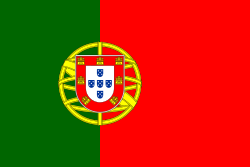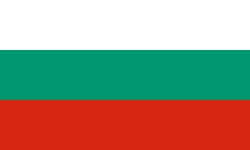Geneva Open
| Geneva Open | ||
|---|---|---|
| ATP-touren | ||
| Plats | Genève (1980–1991; 2015–) | |
| Kategori | ATP-touren (1990–91; 2015–) Grand Prix circuit (1980–89) | |
| Underlag | Grus (1980–1991; 2015–) | |
| Prispengar | 586 140 € (2019) | |
Geneva Open är en tennisturnering för herrar som ursprungligen hölls i Genève mellan 1980 och 1991.
I november 2014 meddelade ATP att Geneva Open återuppstod som en ATP 250 Series-turnering och ersatte tyska Düsseldorf Open inför 2015.[1]
Resultat
Singel
| År | Mästare | Finalist | Resultat |
|---|---|---|---|
| 1980 | 6–3, 6–2 | ||
| 1981 | 6–4, 6–3 | ||
| 1982 | 7–5, 4–6, 6–4 | ||
| 1983 | 3–6, 6–1, 6–3 | ||
| 1984 | 6–7, 6–1, 6–4 | ||
| 1985 | 6–4, 6–4 | ||
| 1986 | 7–5, 6–3 | ||
| 1987 | 6–4, 7–5 | ||
| 1988 | 6–4, 6–4 | ||
| 1989 | 6–4, 7–5 | ||
| 1990 | 7–6, 7–6 | ||
| 1991 | 6–2, 6–4 | ||
| 1992–2014 | Challenger-turnering | ||
| 2015 | 7–6(7–4), 6–4 | ||
| 2016 | 6–4, 7–6(13–11) | ||
| 2017 | 4–6, 6–3, 6–3 | ||
| 2018 | 6–2, 6–2 | ||
| 2019 | 6–3, 3–6, 7–6(10–8) | ||
| 2020 | Turneringen spelades inte på grund av coronaviruspandemin. | ||
| 2021 | 7–6(8–6), 6–4 | ||
Dubbel
| År | Mästare | Finalister | Resultat |
|---|---|---|---|
| 1980 | 6–4, 4–6, 6–4 | ||
| 1981 | 6–4, 3–6, 6–2 | ||
| 1982 | 6–4, 6–0 | ||
| 1983 | 6–1, 2–6, 6–3 | ||
| 1984 | 6–1, 3–6, 7–5 | ||
| 1985 | 6–4, 4–6, 7–5 | ||
| 1986 | 6–4, 3–6, 6–4 | ||
| 1987 | 3–6, 6–4, 6–2 | ||
| 1988 | 6–4, 6–3 | ||
| 1989 | 6–3, 7–5 | ||
| 1990 | 6–3, 7–6 | ||
| 1991 | 3–6, 6–3, 6–2 | ||
| 1992–2014 | Challenger-turnering | ||
| 2015 | 7–5, 4–6, [10–7] | ||
| 2016 | 6–4, 6–1 | ||
| 2017 | 2–6, 7–6(11–9), [10–6] | ||
| 2018 | 3–6, 7–6(7–3), [11–9] | ||
| 2019 | 6–4, 6–4 | ||
| 2020 | Turneringen spelades inte på grund av coronaviruspandemin. | ||
| 2021 | 6–2, 7–5 | ||
Referenser
- ^ ”Geneva welcomes ATP 250 tennis event”. sportspromedia.com. 21 november 2014. https://www.sportspromedia.com/news/geneva_welcomes_atp_250_tennis_event. Läst 28 juni 2021.
Externa länkar
| ||||||||
Media som används på denna webbplats
Flag of Portugal, created by Columbano Bordalo Pinheiro (1857–1929), officially adopted by Portuguese government in June 30th 1911 (in use since about November 1910). Color shades matching the RGB values officially reccomended here. (PMS values should be used for direct ink or textile; CMYK for 4-color offset printing on paper; this is an image for screen display, RGB should be used.)
Det är enkelt att lägga till en ram runt den här bilden
Det är enkelt att lägga till en ram runt den här bilden
Författare/Upphovsman: Gutten på Hemsen, Licens: CC0
Flag of Norway with colors from the previous version on Commons. This file is used to discuss the colors of the Norwegian flag.
Flag of the Socialist Federal Republic of Yugoslavia (1946-1992).
The design (blazon) is defined in Article 4 of the Constitution for the Republic of Yugoslavia (1946). [1]
Flag of the Socialist Federal Republic of Yugoslavia (1946-1992).
The design (blazon) is defined in Article 4 of the Constitution for the Republic of Yugoslavia (1946). [1]
Flag of South Africa, used between 1928 and 1982. It is identical to the 1982 to 1994 version except that the shade of blue is darker. It is also known as the "Oranje-Blanje-Blou".
The civil ensign and flag of Belgium. It is identical to Image:Flag of Belgium.svg except that it has a 2:3 ratio, instead of 13:15.
The flag of Brazil from 1968 to 1992 with 23 stars.
Flag of Iran. The tricolor flag was introduced in 1906, but after the Islamic Revolution of 1979 the Arabic words 'Allahu akbar' ('God is great'), written in the Kufic script of the Qur'an and repeated 22 times, were added to the red and green strips where they border the white central strip and in the middle is the emblem of Iran (which is a stylized Persian alphabet of the Arabic word Allah ("God")).
The official ISIRI standard (translation at FotW) gives two slightly different methods of construction for the flag: a compass-and-straightedge construction used for File:Flag of Iran (official).svg, and a "simplified" construction sheet with rational numbers used for this file.
Färg som används: National flag | South African Government and Pantone Color Picker
| grön | rendered as RGB 0 119 73 | Pantone 3415 C |
| gul | rendered as RGB 255 184 28 | Pantone 1235 C |
| röd | rendered as RGB 224 60 49 | Pantone 179 C |
| blå | rendered as RGB 0 20 137 | Pantone Reflex Blue C |
| vit | rendered as RGB 255 255 255 | |
| svart | rendered as RGB 0 0 0 |
Chinese Taipei Olympic Flag. According to the official website of Chinese Taipei Olympic Committee, Blue Sky(circle) & White Sun(triangles) above the Olympic rings is neither the National Emblem of the Republic of China, nor the Party Emblem of Kuomintang (KMT), but a design in between, where the triangles do not extend to the edge of the blue circle, as registered at International Olympic Committee in 1981 and digitally rendered in 2013. Besides, the blue outline of the five-petaled plum blossom is broader than the red one. Moreover, the CMYK code of the blue one and the Blue Sky & White Sun is "C100-M100-Y0-K0", and different from the Olympic rings (C100-M25-Y0-K0). Note that it's the only version recognized by IOC.
Flag of Switzerland at sea
The national flag of Kingdom of Thailand; there are total of 3 colours:
- Red represents the blood spilt to protect Thailand’s independence and often more simply described as representing the nation.
- White represents the religion of Buddhism, the predominant religion of the nation
- Blue represents the monarchy of the nation, which is recognised as the centre of Thai hearts.












































